What's New
Displaying results 2671 - 2680 of 4052
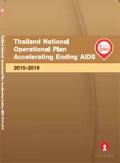
Resource | Publications,
This document represents Thailand’s comprehensive Operational Plan to Accelerate Ending AIDS by 2030, and is focused on the period 2015 to 2019. The actions and interventions outlined here translate the key concepts presented in the current National AIDS Strategy (2014-2016) into an actionable Plan for Ending AIDS in Thailand. This Operational Plan does not replace the strategy document, but rather adds value, by translating new scientific evidence that became available in 2012-2013 into programmatic action. With the aim of fully utilizing this new evidence, the Operational Plan consolidates and refocuses key interventions among key populations (KPs) in high priority geographical sites, with the specific purpose of addressing gaps between the current response and a targeted, optimized response needed to achieve Thailand’s goal of ending AIDS by 2030.

Resource | Publications,
The indicators in this current issue of the monitoring and evaluation of strategy for Health For All have been categorised under the following:
a) Social and socio-economic indicators
b) Health status indicators
c) Specific health problems indicators
d) Health services improvement indicators
These indicators reflect the national scenario and the derivation and method of computation for some of these may differ slightly from WHO conventional formulae.
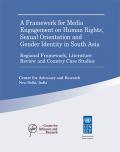
Resource | Publications,
A Framework for Media Engagement on Human Rights, Sexual Orientation and Gender Identity in South Asia: Regional Framework, Literature Review and Country Case Studies provides direction for how men who have sex with men (MSM) and transgender communities should engage with the media, and how the media itself should leverage its influence to reduce stigma and discrimination, educate and raise awareness of human rights issues, and support strategies and programmes that improve the political, social and legal environments for MSM and transgender people in South Asia.
The report includes case studies from Bangladesh, Nepal and India and provides recommendations for actions by programme managers working in South Asia for both managing media and for empowering communities to work more effectively with media.
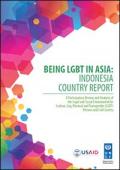
Resource | Publications,
Being LGBT in Asia: the Indonesia Country Report provides an overview of LGBT rights in Indonesia including the effects of laws, policies, culture and social attitudes, and religion, based on research, consultation and the National LGBT Community Dialogue that was held in Bali in June 2013. This overview is followed by an examination of the Indonesia experience of protecting the rights of LGBT people under seven different areas:employment and housing, education and young people, family affairs and social/cultural attitudes, media and ICT, law-human rights and politics, the special case of Aceh, and capacity of LGBT organizations, using the same methodology as described above.
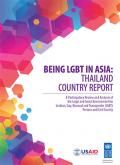
Resource | Publications,
This report reviews the legal and social environment faced by lesbian, gay, bisexual and transgender (LGBT) people in Thailand. It encompasses the findings of the Thailand National LGBT Community Dialogue held in March 2013 in Bangkok, Thailand and additionally includes findings from a desk review, additional interviews, and analysis of published literature on LGBT issues in and about Thailand.
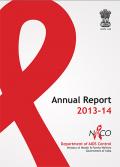
Resource | Publications,
The Annual Report 2013-2014 of the Department of AIDS Control (DAC), Government of India, reviews the progress made under the National AIDS Control Programme (NACP) during the current financial year 2013-2014 in scaling up intervention services for HIV prevention, treatment, care and support across the country through regular monitoring and reporting. This report reflects the commitment of DAC and identifies both achievements and gaps in response to the HIV epidemic.
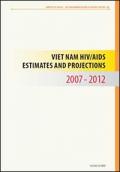
Resource | Publications,
A second round of estimates and projections was conducted in 2007 to estimate future burden and impacts of HIV/AIDS in order to inform national programs anticipating prevention and care needs in Viet Nam. Similar to the 2003 estimates and projections process, seroprevalence data, population size estimates, and pertinent data from ad hoc studies were entered into the Estimation and Projection Package (EPP) Version 3.0 R9 to generate low, medium, and high scenarios of the HIV epidemic. The epidemic curves generated by EPP were then combined with antiretroviral therapy (ART) and prevention of mother to child (PMTCT) data into a second modeling program, SPECTRUM Version 3.14, for further estimates of prevalence, treatment needs, and AIDS related mortality, among other important data presented in this report. National and region-specific outcomes were generated for the 1990-2012 period in Viet Nam and apply to both the general and high risk populations nationwide.
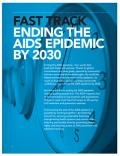
Resource | Publications,
Fast-tracking the AIDS response and setting ambitious targets are critical to ending the AIDS epidemic. This requires transforming the vision of zero new HIV infections, zero discrimination and zero AIDS-related deaths into concrete milestones and endpoints.

Resource | Publications,
The UNAIDS report Fast-Track: Ending the AIDS Epidemic by 2030 outlines that by taking the Fast-Track approach nearly 28 million new HIV infections and 21 million AIDS-related deaths would be averted by 2030.
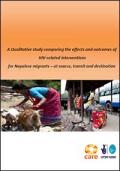
Resource | Publications,
The qualitative study, commissioned by Care Nepal, sought to explore the effects and outcomes of the EMPHASIS project, launched four years ago to reduce HIV and AIDS vulnerability among cross border migrants; and to influence national and regional policies relating to safe mobility through evidence generated regionally. The project, working along a continuum of source, transit, and destination areas, provides HIV prevention and treatment services to migrants and their families. Additionally, the project partners with local stakeholders to ensure safe passage of migrants on transit besides providing other support services. The study was, thus, designed to assess the influence of the project in addressing HIV vulnerabilities, and at the same to enquire into whether inter country passage has been made safer for migrants.





